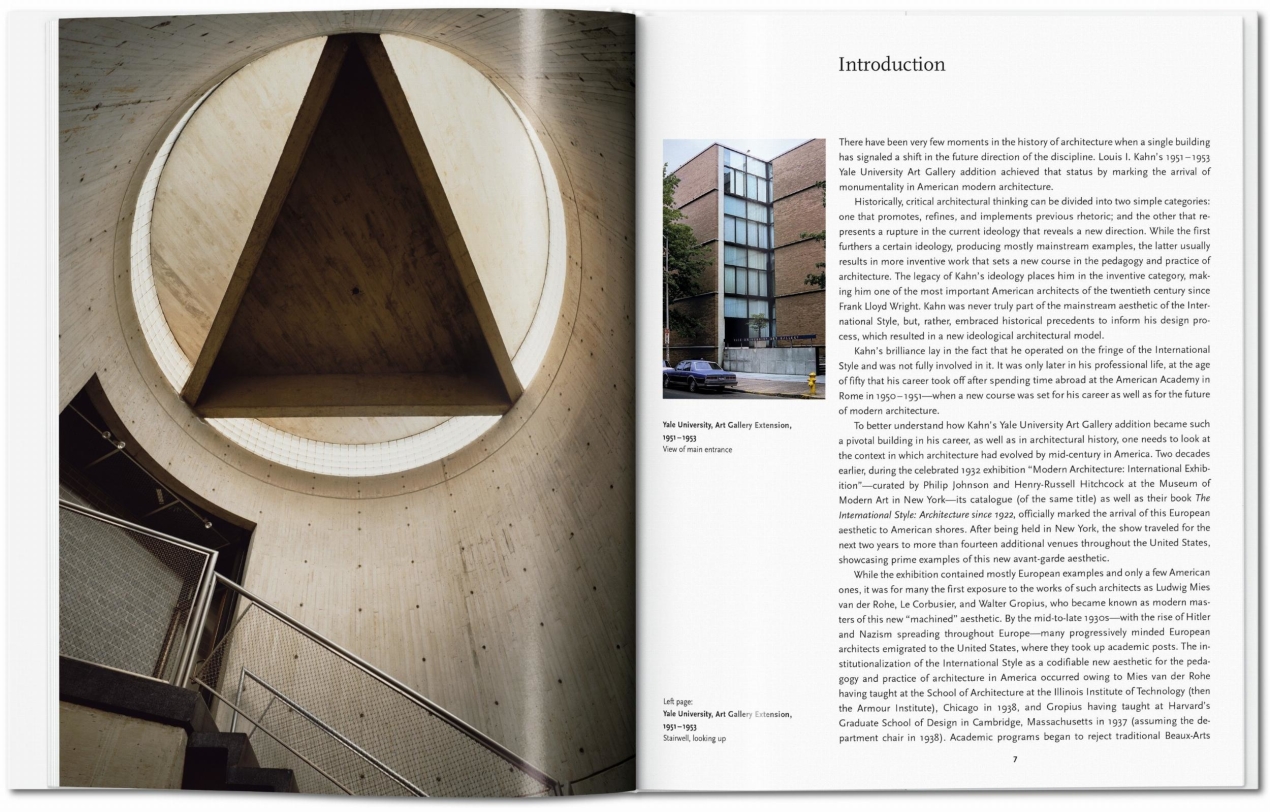1 / 7
Louis I. Kahn
20
Meet the man who treated each building like a temple. From Dhaka, Bangladesh, to La Jolla, California, this book traces the extraordinary architectural language of Louis Isadore Kahn, the pioneering modernist who inflected the International Style with a “back to basics” classical grammar and pierced its sleek masses with geometrical shapes and near-celestial spots of sunlight.
Hardcover, 8.3 x 10.2 in., 1.35 lb, 96 pages

Louis I. Kahn
20Brilliant Buildings
Louis Isadore Kahn and a luminous modernist language
Louis Isadore Kahn (1901–1974) treated each building like a temple. Across the United States, in India, Bangladesh, Pakistan, and Israel, his designs combined the sleek, utilitarian surfaces of modernism with a devotion to geometric forms and a reverence for natural light that suffused his stuctures with a monumental and breathtaking spirituality.
This essential introduction brings together 17 of Kahn’s most important buildings across his cultural, governmental, religious, and residential repertoire. Plans, views, descriptions, and quality photographs trace the context and development of each project, while an introductory essay explores Kahn’s unique architectural ideology and his legacy as one of the most important 20th-century American architects since Frank Lloyd Wright.
Through Kahn masterworks, such as the National Assembly Building in Dhaka, Bangladesh, or Kimbell Art Museum in Fort Worth, Texas, we’ll explore Kahn’s his “back to basics” grammar inspired by ancient sites in Italy, Greece, and Egypt; and his unique vocabulary of mass, void, and light that suffused the International Style with a near-celestial luminescence.
This essential introduction brings together 17 of Kahn’s most important buildings across his cultural, governmental, religious, and residential repertoire. Plans, views, descriptions, and quality photographs trace the context and development of each project, while an introductory essay explores Kahn’s unique architectural ideology and his legacy as one of the most important 20th-century American architects since Frank Lloyd Wright.
Through Kahn masterworks, such as the National Assembly Building in Dhaka, Bangladesh, or Kimbell Art Museum in Fort Worth, Texas, we’ll explore Kahn’s his “back to basics” grammar inspired by ancient sites in Italy, Greece, and Egypt; and his unique vocabulary of mass, void, and light that suffused the International Style with a near-celestial luminescence.
The author
Joseph Rosa is the Director of the University of Michigan Museum of Art. He is author of numerous publications and has taught at Southern California Institute of Architecture (SCI-Arc), the California College of the Arts, The College of Environmental Design at the University of California in Berkeley, and the Graduate School of Architecture, Planning, and Preservation at Columbia University.
The editor
Peter Gössel runs an agency for museum and exhibition design. He has published TASCHEN monographs on Julius Shulman, R. M. Schindler, John Lautner, and Richard Neutra, as well as several titles in the Basic Architecture series.
Louis I. Kahn
Hardcover, 21 x 26 cm, 0.61 kg, 96 pagesISBN 978-3-8365-4384-2
Edition: EnglishDownload product images here
Born back in 1985, the Basic Art Series has evolved into the best-selling art book collection ever published. Each book in TASCHEN’s Basic Architecture series features:
- an introduction to the life and work of the architect
- the major works in chronological order
- information about the clients, architectural preconditions as well as construction problems and resolutions
- a list of all the selected works and a map indicating the locations of the best and most famous buildings
- approximately 120 illustrations (photographs, sketches, drafts, and plans)
5
Non conoscevo bene Kahn.
November 6, 2021
Ora voglio studiarlo meglio e approfondirlo.










